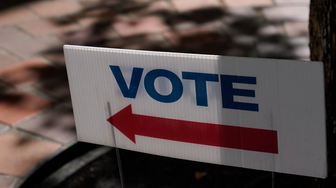The approach we used to produce these results, MRP (short for multi-level regression with post-stratification), is a statistical technique that combines survey data with electorate-level information from the Census and other government agencies - such as population density and the proportion of the population with a university degree - and previous election results. YouGov’s MRP model is more than just a poll, it utilises leading edge data science and is based on a substantial sample of 38,629 interviews. A sample of this size is essential to capture the full range of views across the Australian voting population and ensure the model is robust and reliable.
YouGov's approach to MRP modelling is market leading and has a proven track record of success including in recent British and Spanish national elections. Our model uses a large sample of data collected from our panel to discover relationships between people’s characteristics and their answers to the voting intention question. It then combines these relationships/patterns with information about the characteristics of people living in different electorates to construct estimates of how voting intention would look in each electorate. MRP models are extremely powerful and computationally complex and are capable of simulating and estimating thousands upon thousands of different configurations and patterns of voter behaviour and party support. For the Australian 2025 federal election, each YouGov MRP model will explore over 25,000 different possibilities.
The sample size involved - 38,629 interviews - means we have collected the opinions of many different voters from many different places across all electorates in Australia. Working with such large sample data requires successive rounds of trimming down the overall pool of interview data to create the best and most robust sample possible which we then feed into the MRP model. The effective sample size after trimming each model will be around 10,217.
The modelling process includes many socio-demographic characteristics of individuals and the electorates they live in, past vote choices of individuals, share of votes for various parties within each electorate, and information about patterns of candidacy and party contests across electorates. While we cannot reliably capture every local factor specific to every single seat, our large model sample sizes will help the Australian public understand the attitudes and opinions of different types of voters in different places across Australia.
Both the seat winner and voting intention estimates have some uncertainty, as does any measurement using survey data. For each party in each seat, as well as the seat total for each party overall, we report ‘credible intervals’ which represent the range of data we believe the ‘true’ party shares (and seat totals) have a 90% chance of lying within. The specific number presented for each party is the most likely value, which is typically very close to the middle of that range. So, when assessing the data it is best to remember that both the seat and voting estimates for all parties projected could very well be higher, or lower, than this midpoint.
Two party preferred results
YouGov has changed its methodology for preference allocation for the 2025 Federal election. In previous election polling, YouGov used past voting behaviour while for this election it will use a combination of stated preferences and past voting behaviour. There is a clear rationale for this change. In the 2022 Federal election, Labor won an extraordinary share of preferences due to the unpopularity of the then incumbent Prime Minister. Now Labor is the incumbent, the situation is different, and we cannot expect voters to behave the same way as 2022 in numbering their ballot.
For this model, YouGov has collected voter preference information though a simulated ballot with randomised order that has allows voters to number their choices as they would a normal ballot paper.
Our national two-party preferred results are calculated by analysing and averaging out the projected swing between Labor and the Coalition within each individual seat. Two-party preferred winners within each seat are calculated by simulating how we expect preferences to flow to the top two projected parties (on first preference shares) in each specific type of two-party contest. The data for these preference flows is a blend between what our thousands of respondents are telling us themselves about how they will number their ballot, and historic flows between parties at previous Australian elections.
YouGov’s model has estimated the following preference flows between the two major parties and will be using preference flow this until our next MRP.
| . | Labor | Coalition |
|---|---|---|
Preference share | Preference share | |
firstpref | ||
Greens | 79% | 21% |
Independent | 65% | 35% |
One Nation | 31% | 69% |
Other | 47% | 53% |
For further information please read our Australian Polling Council Methodology Statement.






